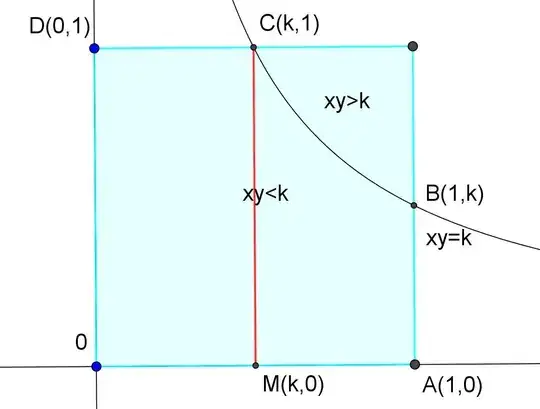I have an exercise where I got stuck and need some help.
Let $X,Y$ be two i.i.d. random variables with $X,Y \sim U(0,1)$ and $T:=XY, Z:=YT$
-Calculate the distribution of $T$
Now following the hints I got, I did the following:
try to calculate $f_{XY}$ by considering an integrable function $g$ s.t. $$E(g(XY))=\int\int g(xy)f_X(x)f_Y(y)dxdy$$ then I did a change of variables to $u=x, v=xy$. This gives the determinant of the Jacobian to be $det(J)=\frac{1}{|u|}$, hence $$E(g(v))=\int\int g(v)f_X(u)f_Y(\frac{v}{u})\frac{1}{|u|}dudv$$ and $$f_{XY}(v)=\int f_X(u)f_Y(\frac{v}{u})\frac{1}{|u|}du$$ Now from the hints it is argued that if we chose $g(v)=e^{-ivk}$, we have the Fourier transform of the density in the expectation integral and by calculating the inverse we get the density distribution.
I have tried computing it, but I can't shake the feeling that I did an obvious mistake here...
So after I changed back the variables I got $$f_{XY}(xy)=\int e^{-ikxy}1_{0\leq x\leq 1}1_{0\leq y\leq 1}\frac{1}{|u|}dk$$ where $1_{A}$ is the indicator/characteristic function (due to $X,Y\sim U(0,1)$).
Whatever I try here, I get a complex valued function as the density which also results in a complex valued distribution which I suspect being wrong.
Can anyone help?
